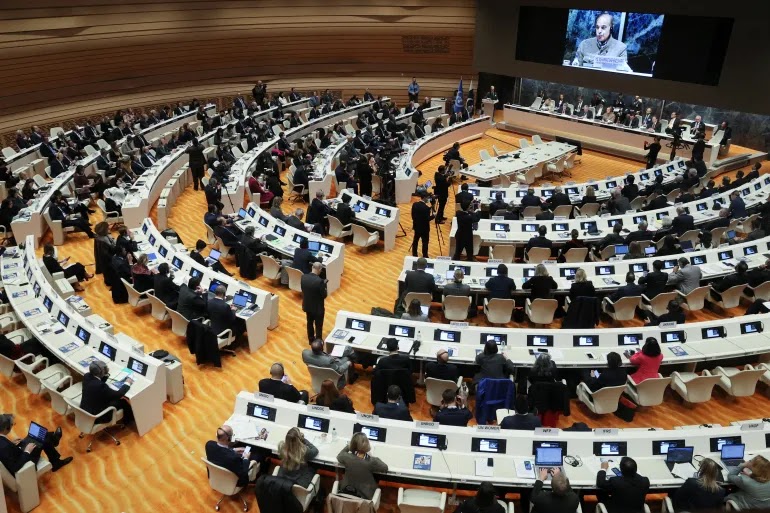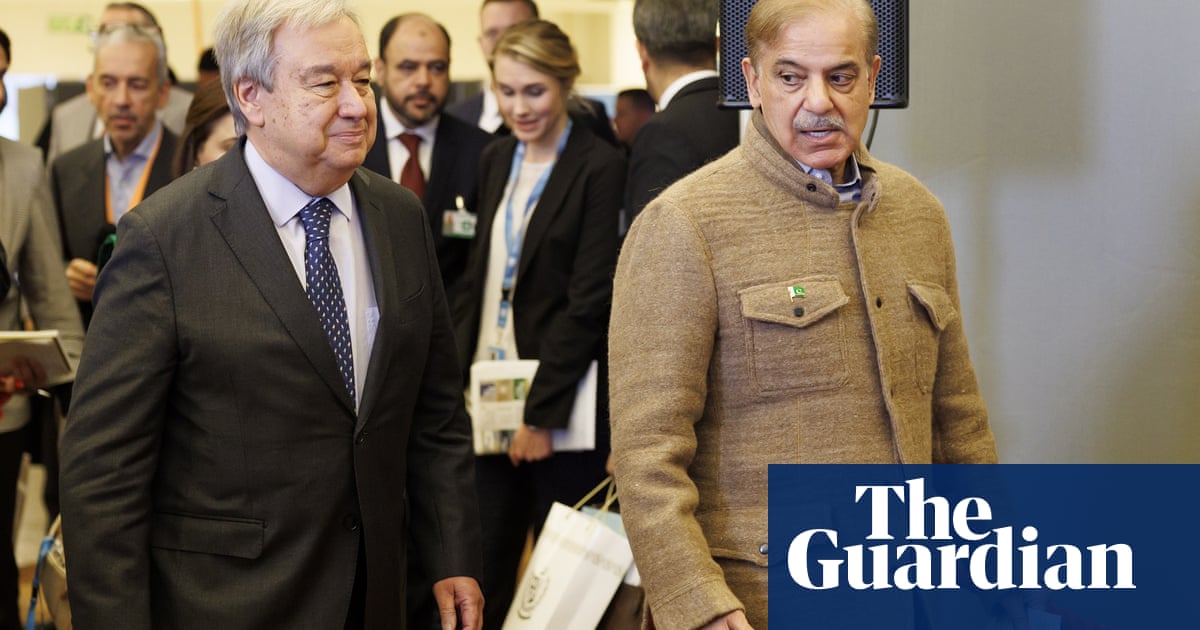
Climate "Loss and Damage": Pakistan Gets Flood Aid Pledges of $10 Billion
Pakistan has received pledges of $10 billion worth of loans and grants to rebuild after devastating floods last year, according to Bloomber...
Pakistan has received pledges of $10 billion worth of loans and grants to rebuild after devastating floods last year, according to Bloomberg News. The amount pledged exceeds the $8 billion that Pakistan sought at the United Nations Donors Conference that concluded today in Geneva, Switzerland. The massive floods affected 33 million people living on vast swathes of land in rural Sindh and Balochistan. The flood waters killed an estimated 1700 people and millions of animals. The floods also washed away millions of acres of standing crops, tens of thousands of homes and thousands of kilometers of roads. The total flood damage is estimated at $33 billion, and cost of rebuilding at $16.5 billion. Prime Minister Shahbaz Sharif and U.N. Secretary-General António Guterres attended in-person, while world leaders such as French President Emmanuel Macron and Turkish President Recep Tayyip Erdoğan took part virtually.
UN Secretary General António Guterres has passionately advocated for immediate help for the people in Pakistan affected by the severe floods resulting from climate change. “We need to be honest about the brutal injustice of loss and damage suffered by developing countries because of climate change,” he told the gathering in Geneva. “If there is any doubt about loss and damage – go to Pakistan. There is loss. There is damage. The devastation of climate change is real.” Mr. Guterres added that people in South Asia are 15 times more likely to die from climate impacts than elsewhere, and his “heart broke” when he saw the devastation left behind from Pakistan’s floods. “No country deserves to endure what happened to Pakistan,” he said. “But it was especially bitter to watch that country’s generous spirit being repaid with a climate disaster of monumental scale.”
Jeddah-based Islamic Development Bank pledged $4.2 billion accounting for the largest share of the total amount of $10 billion. The World Bank pledged $2 billion, Asian Development Bank $1.5 billion, France $345 million, China $100 million, US $100 million, European Union $93 million, Germany $88 million and Japan $77 million.
At COP27, the United Nations climate summit, Pakistan led the fight for funding to compensate nations for “loss and damage”. Pakistan had the support of 134 developing nations. Earlier at COP26 in Scotland, discussions were mainly focused on funding "mitigation" and "adaptation", not compensation for "loss and damage".
The "loss and damage" agenda item was first proposed by Pakistan during talks at Bonn after the country suffered heavy losses in unprecedented floods that hit a third of the country. “My country, Pakistan, has seen floods that have left 33 million lives in tatters and have caused loss and damage amounting to 10% of the GDP,” said Ambassador Munir Akram, the 2022 chair of the G77—a group of 134 developing countries, at the opening session of COP27 at Sharm al-Sheikh, Egypt.
Pakistan has contributed only 0.28% of the CO2 emissions but it is among the biggest victims of climate change. The US, Europe, India, China and Japan, the world's biggest polluters, must accept responsibility for the catastrophic floods in Pakistan and climate disasters elsewhere. A direct link of the disaster in Pakistan to climate change has been confirmed by a team of 26 scientists affiliated with World Weather Attribution, a research initiative that specializes in rapid studies of extreme events, according to the New York Times.
Currently, the biggest annual CO2 emitters are China, the US, India and Russia. Pakistan's annual CO2 emissions add up to just 235 million tons. On the other hand, China contributes 11.7 billion tons, the United States 4.5 billion tons, India 2.4 billion tons, Russia 1.6 billion tons and Japan 1.06 billion tons.
The United States has contributed 399 billion tons (25%) of CO2 emissions, the highest cumulative carbon emissions since the start of the Industrial Revolution in the late 18th century. The 28 countries of the European Union (EU28), including the United Kingdom, come in second with 353 billion tons of CO2 (22%), followed by China with 200 billion tons (12.7%).
Pakistan's cumulative CO2 contribution in its entire history is just 4.4 billion tons (0.28%). Among Pakistan's neighbors, China's cumulative contribution is 200 billion tons (12.7%), India's 48 billion tons (3%) and Iran's 17 billion tons (1%).
Pakistan has contributed little to climate change but it has become one of its biggest victims. In the 2015 Paris agreement on climate change, signatories agreed to recognize and “address” the loss and damage caused by those dangerous climate impacts, according to the Washington Post. In 2021, at the major U.N. climate conference in Glasgow, Scotland, negotiators from developing countries tried to establish a formal fund to help the countries like Pakistan most affected by climate disasters. It was blocked by rich countries led by the Biden administration. Pakistan finally succeeded in acceptance of "loss and damage" at COP27 conference in 2022. The UN-sponsored Pakistan Donors Conference in Geneva this year is an important milestone and a good start toward practically helping the victims of climate change in developing nations.
Related Links:
Haq's Musings
South Asia Investor Review
Catastrophic Floods in Pakistan
Pakistan Led "Loss and Damage" Demand at COP27 in Sharm El-Sheikh
Biggest Polluters Must Pay For Flood Damage in Pakistan
Cycles of Drought and Floods in Pakistan
Pakistan at 75: Economic and Demographic Progress
Dust Bowl in Thar Desert Region
Angelina Jolie Used Star Power to Help Pakistan Flood Victims
Bridge Collapse After Sudden Glacier Melt in Pakistan
Riaz Haq's Youtube Channel
PakAlumni Social Network

Climate "Loss and Damage": Pakistan Gets Flood Aid Pledges of $10 Billion
Pakistan has received pledges of $10 billion worth of loans and grants to rebuild after devastating floods last year, according to Bloomber...
Last edited:










